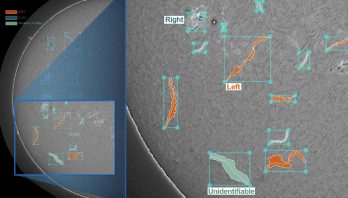
Harnessing AI for Space Weather Forecasting with NSF GONG Data
Solar filaments, dramatic thread-like structures visible in the Sun’s chromosphere, may hold the key to understanding one of the most ...
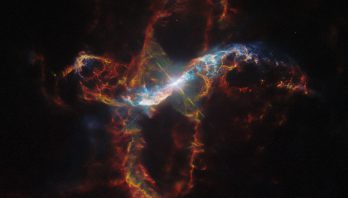
NASA’s Hubble Sees a Stellar Volcano
NASA's Hubble Space Telescope has provided a dramatic and colorful close-up look at one of the most rambunctious stars in ...
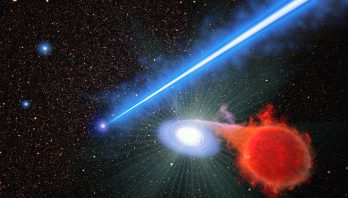
NASA’s Hubble Finds that a Black Hole Beam Promotes Stellar Eruptions
In a surprise finding, astronomers using NASA's Hubble Space Telescope have discovered that the blowtorch-like jet from a supermassive black ...

DECam Confirms that Early-Universe Quasar Neighborhoods are Indeed Cluttered
Observations using the Dark Energy Camera (DECam) confirm astronomers’ expectation that early-Universe quasars formed in regions of space densely populated ...
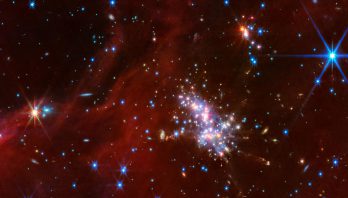
NASA’s Webb Peers into the Extreme Outer Galaxy
Astronomers have directed NASA’s James Webb Space Telescope to examine the outskirts of our Milky Way galaxy. Scientists call this region ...
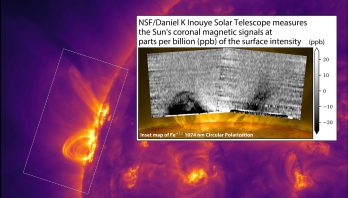
Groundbreaking Achievement: NSF Daniel K. Inouye Solar Telescope Produces its First Magnetic Field Maps of the Sun’s Corona
Maui, Hawaii – The U.S. National Science Foundation (NSF) Daniel K. Inouye Solar Telescope, the world’s most powerful solar telescope, designed, ...
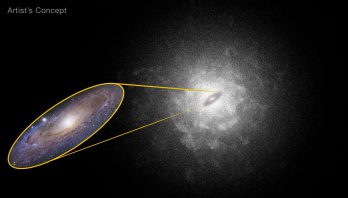
NASA’s Roman Space Telescope to Investigate Galactic Fossils
The universe is a dynamic, ever-changing place where galaxies are dancing, merging together, and shifting appearance. Unfortunately, because these changes ...
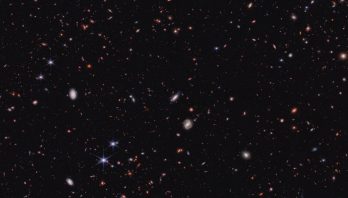
Webb Finds Early Galaxies Weren’t Too Big for Their Britches After All
When astronomers got their first glimpses of galaxies in the early universe from NASA's James Webb Space Telescope, they were ...
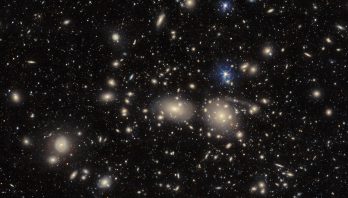
Queen Berenice II’s Hair Tied Together by Dark Matter
The Dark Energy Camera captures an image of the dazzling Coma Cluster, named after the hair of Queen Berenice II ...
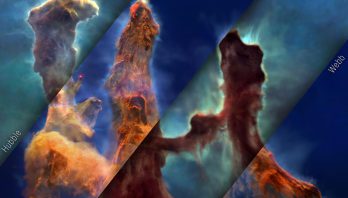
Pillars of Creation Star in New Visualization from NASA’s Hubble and Webb Telescopes
Made famous in 1995 by NASA's Hubble Space Telescope, the Pillars of Creation in the heart of the Eagle Nebula ...

Gemini North Captures Starburst Galaxy Blazing Bright With Newly Forming Stars
A festive array of bright pinks and blues makes for a remarkable sight in this image captured with the Gemini ...
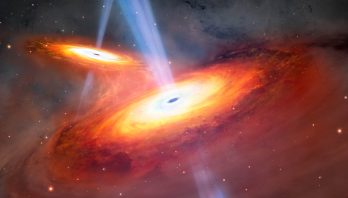
International Gemini Observatory and Subaru Combine Forces to Discover First Ever Pair of Merging Quasars at Cosmic Dawn
Since the very first instant after the Big Bang the Universe has been expanding. This means that the early Universe ...
